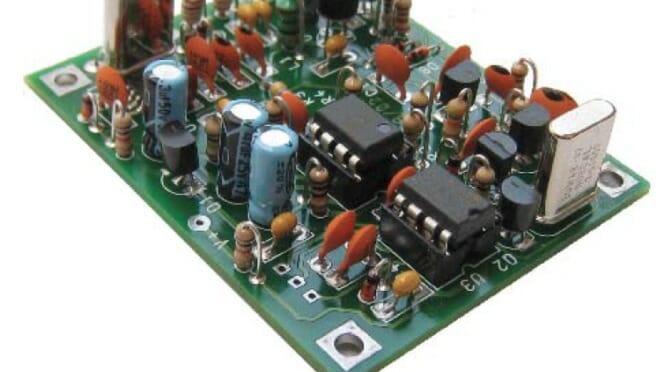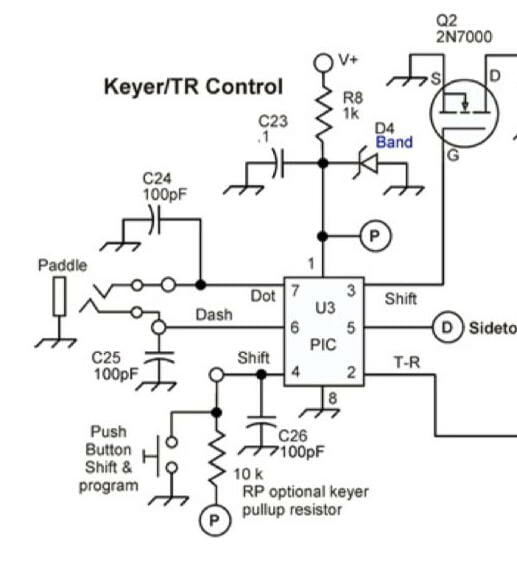The Rockmite part 2: The UI

In the first Rockmite article I described the receiver of the radio. This article will describe the user interface for the RockMite. The term “user interface” might sound a little fanciful for a radio with almost no controls, but there is plenty to discuss. We should begin with the portion of the schematic dedicated to this function.

A portion of the schematic for the CPU and I/O functions
At the center of the schematic is a PIC processor from MicroChip corporation. These are small 8-bit computers that have dedicated I/O onboard. They are simple to program and are very inexpensive, key features for a radio that must cost under $50. Two of the input lines for the processor (pins 6 and 7) go to a 3.5mm stereo connector for iambic paddle input. Pin 6 connects to the “dash” or “dah” line, and pin 7 connected to the “dot” or “dit” line of the paddle. One of the functions of this PIC microprocessor is to provide the radio with an iambic keyer function.
The other user input is a single button. This button serves multiple purposes. A press of less than a quarter second tells the processor to “shift” the radio’s frequency. More on this in a bit. A longer press (greater than a quarter second) puts the keyer into “speed adjustment mode” that monitors the paddle inputs. Tapping or holding the “dit” side increases keyer speed; tapping or holding the “dah” side decreases keyer speed. Do neither for a second-and-a-half and the processor reverts back to standard iambic keyer mode.
The “shift” mode is the more interesting effects from a button press. The RockMite is actually able to operate on TWO frequencies, not just one. There is a special circuit in with the crystal controlled oscillator that causes this frequency shift. That will be discussed in the next RockMite article. All we need to know for now is that the “shift” line comes out of pin 3 and controls a 2N7000 transistor switch.
The other two outputs of the microprocessor are to the sidetone and the transmit/receive (T/R) switch. The sidetone is the sound you hear when keying. That’s the audio feedback on your paddle operation. The RockMite sends a square wave from this pin to the audio amplifier described in last month’s article. The sound of a square wave in your ears is harsh, and there are a number of mods available to clean this up.
The T/R line controls the mode of the radio. Is it in receive mode or transmit mode? This will be discussed in the article that deals with the transmitter.
This was a brief article but we’re left with two interesting threads to pull on: radio’s oscillator (and shift function), and the radio’s transmitter (and the T/R switch). We’ll start with the oscillator next time.
May 13, 2019


